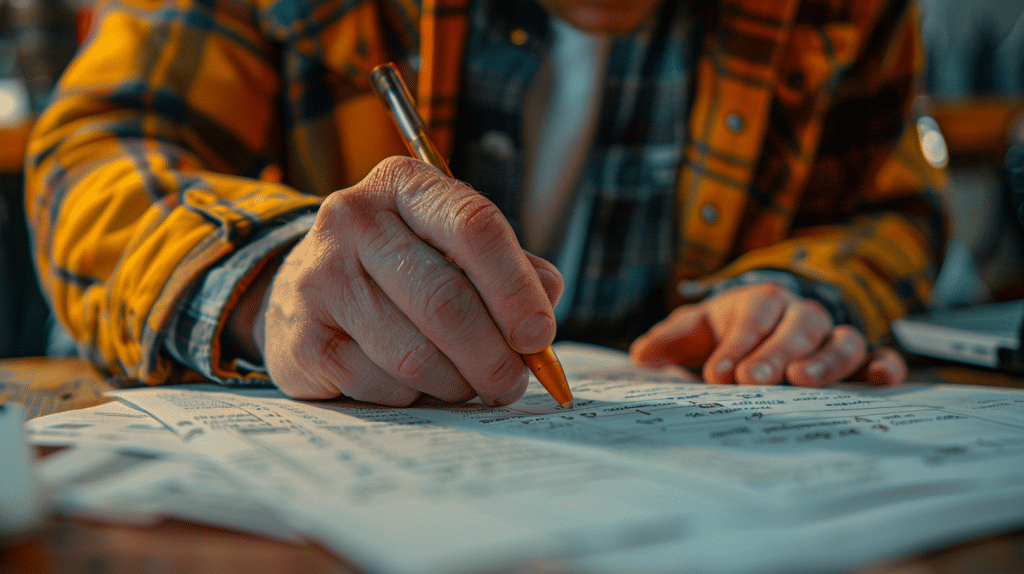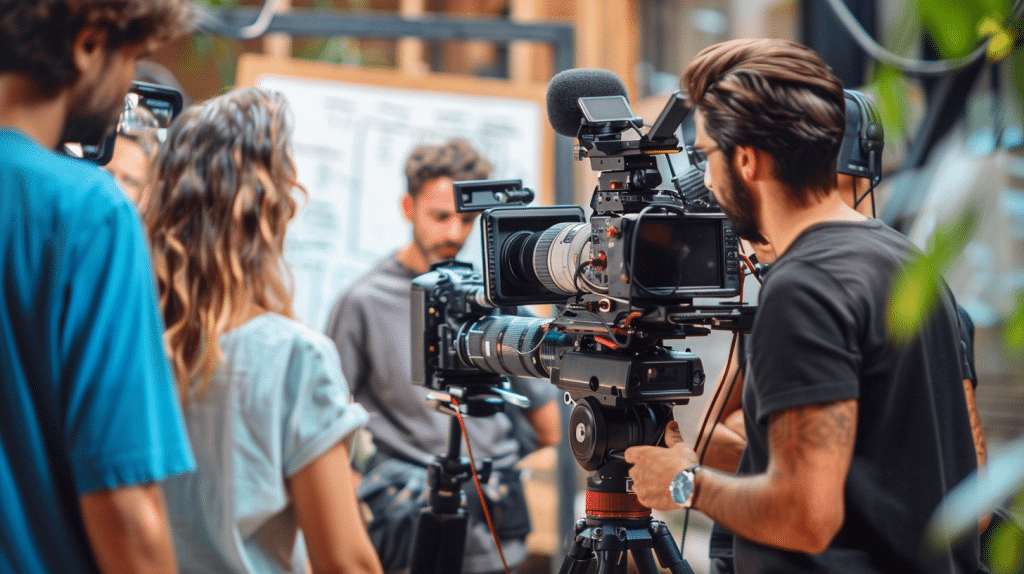Mastering the Art of Script Breakdown: A Step-by-Step Guide for Filmmakers

When you’re starting on the journey of filmmaking, mastering the art of script breakdown is essential.
This guide walks you through each step, from understanding the script’s nuances to identifying key elements like characters, props, and locations.
By dissecting the script meticulously, you can streamline your production process and enhance storytelling.
But how exactly do you manage scene breakdowns, budgeting, and collaboration with various departments effectively?
You’ll find that these aspects, often overlooked, are pivotal in bringing your vision to life on screen.
Let’s explore how you can harness these techniques to elevate your filmmaking craft.
Table of Contents
Understanding Script Breakdown
Understanding script breakdown requires identifying and categorizing every element within the script. You start by dissecting the story structure, which forms the backbone of your breakdown.
Pinpoint the key elements: acts, scenes, and sequences.
Each segment should be clearly marked to make sure you’re aware of shifts and pivotal moments. This step sets the foundation for a detailed and effective breakdown.
Next, delve into thematic analysis. Identify the underlying themes that drive the narrative.
What messages or motifs recur throughout the script?
Recognizing these elements helps you comprehend the story’s core, making certain that every part of the breakdown supports the script’s intent. For instance, if the theme revolves around redemption, note how characters and settings reinforce this idea.
As you work through the script, be observant and meticulous. Highlight all necessary details—character appearances, props, settings, and special effects.
Categorize them according to their relevance and frequency. By systematically organizing these elements, you can anticipate the needs of each department, from costumes to set design.
Your thorough understanding of story structure and thematic analysis ensures that nothing gets overlooked, laying the groundwork for a seamless production process.
Gathering Essential Tools
With a solid grasp on script breakdown, it’s time to gather the tools you’ll need to guarantee every detail is meticulously captured.
First, consider your software options.
Programs like Final Draft, Movie Magic Scheduling, and Celtx are invaluable for marking up scripts and organizing elements.
These tools allow for efficient highlighting, note-taking, and categorization, ensuring nothing slips through the cracks. They also offer functionalities like automated breakdown sheets and production reports, which save time and reduce errors.
Now, let’s talk about physical tools.
You’ll need highlighters in various colors to mark different elements such as props, costumes, and locations directly on printed scripts. Index cards are essential for jotting down quick notes and arranging scenes visually.
Don’t forget sticky notes for temporary annotations and adjustments. A sturdy binder will keep all your printed materials organized, and dividers labeled by scene or category can streamline your workflow.
Lastly, a reliable digital device, like a tablet or laptop, is essential for accessing and updating breakdown information on the go.
By combining the right software options and physical tools, you’ll be well-equipped to tackle any script breakdown with precision and clarity.

Identifying Key Elements
To master script breakdown, you must first identify key elements such as characters, props, locations, and special effects.
Start by meticulously reading through the script to pinpoint these essential aspects. Understanding these elements allows you to organize and plan your shoot effectively, making certain nothing is overlooked.
Pay close attention to themes symbolism and subtext analysis.
These deeper layers add richness to your production and help convey the story’s underlying messages. Look for recurring motifs, hidden meanings, and character arcs that may not be immediately obvious but are vital to the narrative.
Here are some key elements to focus on:
- Characters: Identify every character, their significance, and relationships. This will help with casting and character development.
- Props: Note all props mentioned, their symbolic value, and how they contribute to the story.
- Locations: Mark every setting, whether it’s an indoor scene or an outdoor environment, to plan logistics and design.
- Special Effects: Identify any special effects required, as these need significant preparation and technical expertise.
Being detail-oriented and organized in this phase ensures you don’t miss any critical components.
Observing these elements closely will set a strong foundation for your filmmaking process.
Highlighting Characters and Props
Now that you’ve identified key elements, let’s focus on how to effectively highlight characters and props to enhance your script breakdown process.
Begin by thoroughly reading the script and noting each character’s introduction. Highlight their names in one color to easily track their appearances.
Pay close attention to the dialogue, as it often reveals essential aspects of character arcs. Use a different color to mark important lines that define their motivations, conflicts, and growth throughout the story.
Next, identify and highlight props that are essential to the plot or character development. These can be anything from a character’s unique accessory to an important item that drives the story forward.
Use consistent symbols or colors to differentiate between various types of props. For instance, you might circle weapons in red and sentimental items in blue.
Analyzing Locations and Set Pieces

When analyzing locations and set pieces, carefully examine each scene to determine how the environment influences the narrative and character interactions.
Begin by envisioning the setting described in the script. Ask yourself how the location contributes to the tone and mood of the scene.
Consider how characters interact with their surroundings and how these elements drive the story forward.
Location scouting is vital. You’ll need to find places that not only match the script’s requirements but also add depth to the storytelling.
Don’t overlook the details, as they can greatly impact the film’s authenticity. Engage with your team to brainstorm creative solutions for transforming ordinary spaces into compelling sets.
Here are key factors to ponder:
- Atmosphere: Does the location enhance the emotional undercurrent of the scene?
- Practicality: Is the location accessible, and does it fit within the budget and logistical constraints?
- Set design: How will you dress the set to align with the period, genre, and character backgrounds?
- Continuity: Can the location support multiple scenes, ensuring visual consistency?
Breaking Down Scenes
After securing the perfect locations and set pieces, the next step is to meticulously break down each scene to understand the specific needs and requirements for filming.
Begin by carefully reading through the scene to identify key elements: characters, props, costumes, and special effects. Make notes on each aspect, ensuring no detail is overlooked.
Pay close attention to scene changes. Determine how each scene flows into the next and what’s required to maintain continuity.
Scene changes can influence the timing, lighting, and even the positioning of actors and props, so they need to be planned meticulously.
Next, focus on the pivotal moments within the scene. These are critical moments where a character’s emotions shift, driving the narrative forward.
Identify these moments and consider how to highlight them through camera angles, lighting, and actor direction. Pivotal moments provide depth and can greatly impact the audience’s connection to the story.
Scheduling and Budgeting

When you tackle scheduling and budgeting, focus on organizing scenes efficiently to maximize time and resources.
Pay close attention to estimating costs accurately, ensuring you account for every detail from props to personnel.
This precision helps keep the project on track and within budget.
Efficient Scene Scheduling
To efficiently schedule scenes, start by categorizing them based on location, time of day, and cast availability. This approach ensures you minimize downtime and make the best use of your resources.
Consider how scene changes and shot sequences will impact the flow and timing of your shoot. Grouping scenes by location can save time and money by reducing the need for frequent set changes.
Focus on the following key areas:
- Location: Schedule all scenes at the same location consecutively to avoid moving equipment and crew repeatedly.
- Time of Day: Film all daytime or nighttime scenes back-to-back to maintain consistent lighting conditions.
- Cast Availability: Align the shoot schedule with your actors’ availability to prevent delays and maximize their time on set.
- Complexity: Arrange simpler scenes around more complex ones to maintain momentum and manage energy levels.
Accurate Cost Estimation
Understanding the intricacies of precise cost estimation is essential for effective scheduling and budgeting in film production.
You need to start by meticulously breaking down the script to identify every cost element, from set construction to actor salaries. Each scene will have its unique requirements, and it’s important to categorize these to prevent overlooked expenses.
Expense tracking becomes your best friend here. Create detailed spreadsheets and use budgeting software to monitor every dollar.
This will allow you to maintain a clear overview of your finances and make informed decisions. Regularly update these records to reflect real-time expenditures and avoid nasty surprises later on.
Budget adjustments are inevitable. As you explore further into the production process, unanticipated costs will arise.
Be prepared to reallocate funds without compromising the project’s overall quality. Regularly review your budget and compare it with your expense tracking records to identify areas where you can cut costs or need to invest more.
Effective cost estimation also involves negotiating with vendors and contractors to get the best deals. By being observant and detail-oriented, you’ll make sure that your film remains financially viable while maintaining the creative vision intact.
Collaborating With Departments

Effective script breakdown requires seamless collaboration with various departments to guarantee every aspect of the production is meticulously planned and executed.
Start by fostering team synergy and maintaining open lines of interdepartmental communication. This ensures everyone’s on the same page and working towards a common goal.
During the breakdown process, coordinate with key departments like art, wardrobe, and props to identify their specific needs. Here’s how you can enhance collaboration:
- Art Department: Discuss set designs and locations to make sure the visual style aligns with the script’s demands.
- Wardrobe: Communicate character details and scene requirements to ensure costumes accurately reflect the storyline.
- Props: Confirm what items are needed on set, when they’re required, and their specific details to prevent last-minute scrambles.
- Camera and Lighting: Share scene breakdowns to plan shot compositions and lighting setups effectively.
Frequently Asked Questions
How Long Does It Typically Take to Complete a Script Breakdown?
Completing a script breakdown typically takes a few days to a week, depending on your time management and efficiency strategies.
If you’re observant and organized, you can streamline the process. Prioritize scenes, identify key elements, and avoid distractions.
Use tools like color-coding and spreadsheets to stay detail-oriented. By maintaining focus and utilizing these techniques, you’ll efficiently manage your time and complete the breakdown effectively.
What Software Is Best for Script Breakdowns in Indie Filmmaking?
When you’re dealing with budget constraints and need effective team collaboration, consider using software like Celtx or StudioBinder for script breakdowns.
Celtx is budget-friendly and offers collaborative features, while StudioBinder is excellent for detailed breakdowns and seamless team communication.
These tools help you stay organized and observant, ensuring every element is meticulously planned without overspending.
They’re essential for indie filmmakers aiming for professional results.
How Do You Handle Script Revisions During the Breakdown Process?
When handling script revisions during the breakdown process, you should prioritize clear communication strategies. Make sure everyone’s on the same page by using consistent version control.
Label each revision clearly and distribute updated versions to your team promptly. Email updates or project management tools can help keep track of changes.
Always double-check that all departments are informed about the latest script version to avoid any misunderstandings or delays.
Are There Industry Standards for Color-Coding Elements in a Script Breakdown?
Imagine a painter’s palette bursting with colors. In script breakdowns, you’ll find industry standards for color-coding conventions that help you organize element categories efficiently.
Typically, characters might be highlighted in yellow, props in green, and wardrobe in blue. These conventions guarantee everyone’s on the same page, making the chaotic world of filmmaking more manageable and visually organized.
Observing these standards can streamline your production workflow greatly.
How Can a Script Breakdown Impact the Overall Production Timeline?
A script breakdown can have a substantial impact on the overall production timeline. By identifying key elements, you can streamline budget allocation and optimize crew scheduling.
This organized approach guarantees resources are used efficiently and potential issues are flagged early. Observing these details helps prevent delays, keeps the project on track, and allows for better planning of each production phase.
Proper script breakdown leads to a smoother, more predictable filmmaking process.
Looking Ahead
You’ve now got the roadmap to master script breakdowns and bring your vision to life. Remember, each detail is a thread in your cinematic tapestry.
With meticulous planning and collaboration, you’ll transform words on a page into a vivid, moving story. Don’t overlook the small stuff; it’s often the key to revealing greatness.
Equip yourself with these tools, and watch your production soar.
The magic of filmmaking lies in your hands—go create something extraordinary.
Share:
Search our blog:
Follow us on:
